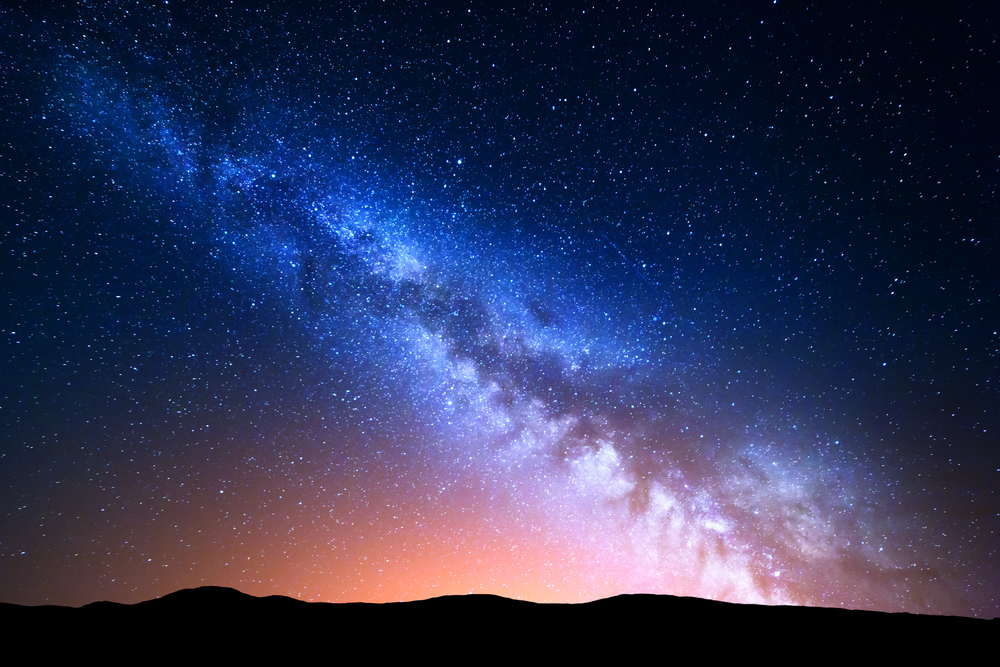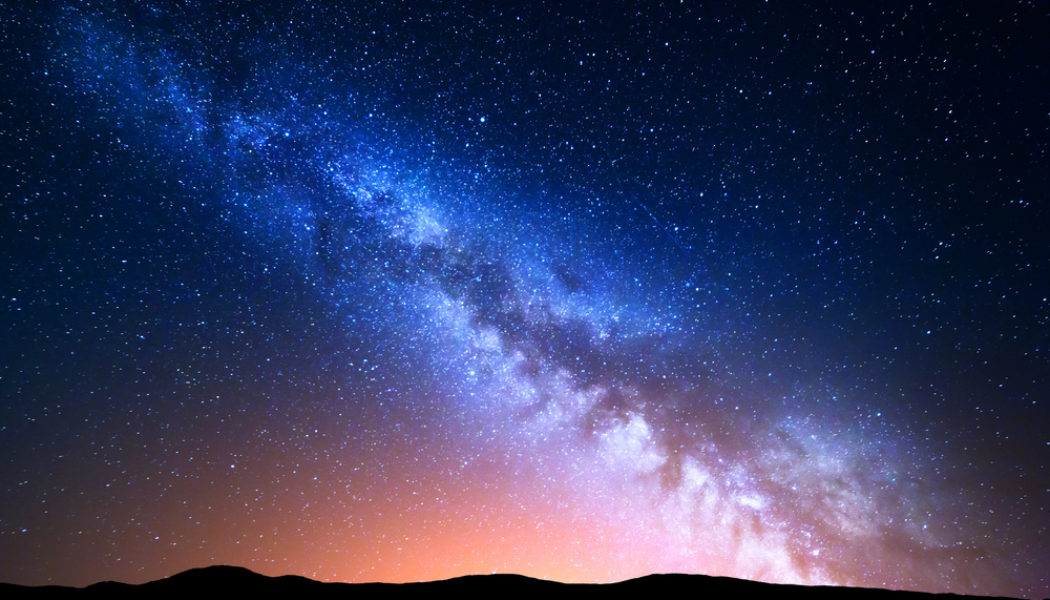
The Milky Way dominates the night sky. It appears as a hazy band of light that stretches from one horizon to the other. But this side-on view hides the galaxy’s structure and prevents astronomers deciphering the shape of our home galaxy.
Nevertheless, astronomers currently believe that the Milky Way is a spiral galaxy consisting of a central bulge or bar with four main spiral arms and several others branching away.
Now Ye Xu at the Purple Mountain Observatory in Nanjing, China, and colleagues, say this picture needs to be revised. Using highly precise measurements of star locations, they have built a more accurate map of the Milky Way. They conclude it must be a two-armed barred spiral and that the other more distant arms have somehow split to form minor arms.
Spiral Rethink
Astronomers have long known from astronomical mages that galaxies fall into three shape categories: elliptical blobs, irregular shapes and spirals. Most spirals have two main arms with the clearest examples called “grand-design” spirals. More commonly, however, the spirals split to form other minor arms, probably as a result of collisions and mergers with other clusters and galaxies. On top of this, some spirals have a central bulge or bar from which the spiral arms extend.
That makes astronomers’ conclusion that the Milky Way has four arms, something of a surprise. If it turns out to be true, the Milky Way would be a very unusual galaxy, which would require some explaining.
Ye and co’s work is based on data from a new generation of instruments capable of measuring the distance to stars more accurately than ever before. One source is very long baseline interferometry which picks up radio signals from masers —stars that emit microwaves. This technique can determine their distance to within 20 microarseconds. (One microarcsecond is about the width of a full stop in the Apollo manuals left on the moon, according to Wikipedia.) The team were able to map the positions of over 200 of these.
Another source of new data is the Gaia space observatory, which is currently mapping the position of a thousand billion stars in the Milky Way. Ye and co have focused on hot, massive suns, called O-B type stars, which are good indicators of galactic structure because they tend not to move far from where they formed. Ye and co include the position of almost 24,000 of these with a similar accuracy to masers.
They also included the position of almost a thousand open clusters of stars, again taken from Gaia data.
Having mapped the position of these objects, the team then looked for spiral shapes that fit their distribution. This is no easy task. Most of these stars are relatively close to the Sun and so sit in just one quadrant of the Milky Way.
Nevertheless, Ye and co say the best fit is a barred spiral with two symmetrical inner arms stretching away from the ends of the bar. These are the Perseus and Norma Arms.
Multiple Arms
The other arms, they say, are longer, more distant and irregular, having become disconnected from the main structure, perhaps in galactic collisions in the distant past. Indeed, the Milky way is thought to suffered just such a collision some 10 billion years ago. These irregular structures are the Centaurus, Sagittarius, Carina, Outer and Local Arms. Because of this, Ye and co classify the Milky Way as a multiple arm galaxy.
That’s interesting work that makes the Milky Way seem much more ordinary than the four-arm theory suggested. “The morphology of the Milky Way is similar to those of most multiple-arm galaxies in the universe,” say Ye and co.
There are still some puzzles to be solved. The researchers say they still cannot tell whether the Norma and Perseus arms begin at the ends of the central bar. That will require more data.
That data will surely accumulate as Gaia and other observatories produce an ever more detailed picture of the 3D structure of our galaxy. In the meantime, astronomers can rest easy that the Milky Way is an unremarkable galaxy that appears to have formed in the same way as the vast majority of others.
Ref: What Does the Milky Way Look Like? : arxiv.org/abs/2304.10690








